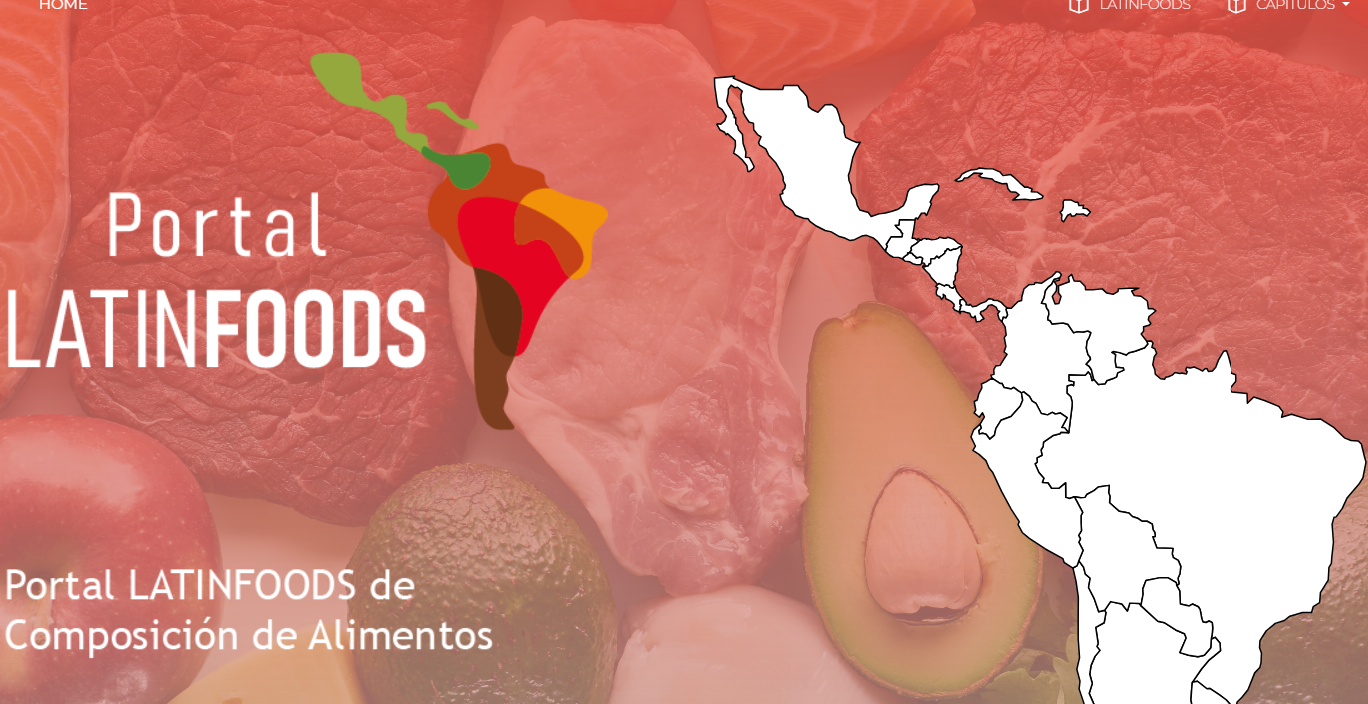


Latinfoods is a global network of experts dedicated to improving the quality, availability, reliability and use of food composition data (image: Latinfoods Portal)
Published on 05/14/2025
Agência FAPESP* – The Food Research Center (FoRC) has launched the Latinfoods Portal, a platform that brings together data on food composition from several Latin American countries. The FoRC is a Research, Innovation and Dissemination Center (RIDC) supported by FAPESP.
The portal is funded by FAPESP and aims to share standardized and harmonized information on the chemical composition of foods (ingredients, processed foods and preparations), taking into account the eating habits, biodiversity and biomes of each Latin American country.
The initiative is part of the Latin American Food Composition Network (Latinfoods), an arm of the International Food Data Systems Network of the Food and Agriculture Organization of the United Nations (FAO).
Latinfoods is a global network of experts dedicated to improving the quality, availability, reliability and use of food composition data.
The purpose of the Latinfoods Portal is to create databases with information on the nutrients and energy values of the foods most consumed by the local population. As well as being a resource for researchers and nutritionists, the tool serves as a reference for studies on the food consumption of populations, allowing the identification of specific nutritional deficiencies.
“Many of these studies use data from tables in other countries, such as the United States, whose foods and nutritional profiles are different from those consumed in Latin America, because the countries don’t have this information in an easily accessible place. With the information collected on the portal, it’ll be possible to have precise and specific data on foods from each country, providing valuable input for public policies,” says the project’s coordinator, nutritionist Kristy Soraya Coelho, a researcher at the FoRC.
For the FoRC’s executive director, Eduardo Purgatto, the launch of the tool is a milestone for Latin America and represents a significant advance in the standardization and sharing of food data among countries in the region, with a direct impact on improving the quality of life of local populations. “The portal plays a fundamental role in this scenario because it ensures that member countries have accurate and consistent information to guide public policies,” he stressed.
Innovative methods
The Latinfoods Portal was developed by compiling food chemical composition data from the scientific literature using standardized methods. In its current initial phase, the portal provides original data from the analysis of approximately 600 foods, including ingredients and preparations. However, these foods will not yet have more complete nutrient information.
After this stage, the project will enter a new phase, with the addition of information in an appropriate manner that will allow the calculation of the nutrients of foods that are already prepared, i.e. ready for consumption, adjusting for the type of preparation (boiled, baked, grilled, fried, etc.).
“This process, also developed by the FoRC, will make it possible to better estimate the amount of nutrients, taking into account factors such as gain or loss of moisture and lipids during preparation,” explains nutritionist Eliana Bistriche Giuntini, a researcher at the FoRC.
In the future, an app will be developed to facilitate access to the information on the portal. It is expected that the number of registered pieces of information will grow over time, as has happened with the FoRC’s Brazilian Food Composition Table (TBCA).
The project is the result of a collaboration between institutions in several Latin American countries. In addition to Brazil, countries such as Argentina, Chile, Costa Rica, Guatemala, Mexico and Paraguay are participating in the initiative. Each country is contributing to the compilation of national food data. In addition, other countries in the region have already expressed interest in joining the project.
The portal can be accessed at www.latinfoodsportal.net/index.php.
* With information from the FoRC Press Office
Source: https://agencia.fapesp.br/54748